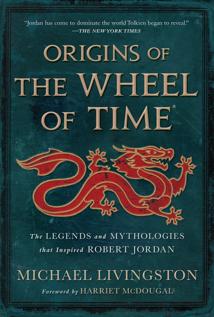
I love The Wheel of Time.
Robert Jordan built an absolutely wonderful world. And when he passed away, Brandon Sanderson (with the help of Jordan’s wife and team) managed to do what I really wasn’t sure was possible and managed to finish it.
The first half of Origins of the Wheel of Time gives a biography of Robert Jordan.
There is also the matter of how to refer to the author himself. Robert Jordan was one of several pseudonyms used by James Oliver Rigney, Jr., who was known to his friends and family as Jim. His fans, meanwhile, often referred to him as “Mr. Jordan” or “the Creator.” I have, as a matter of standard practice, opted to refer to him simply as “Jordan” throughout this book—even when referencing times before he himself took that name in print. While this wasn’t the name he’d have answered to for much of his life, it’s the name by which he was most famously known.
It’s a fascinating collection of Jordan’s life. Growing up, going to war, meeting Harriet, time as a writer. And finally–time as the author of the Wheel of Time.
Over the years, I’d picked up a decent amount of this, but there were more than a few things that were well worth the read to find out. Jordan was a fascinating person and lived quite a life. To have all that collected in one place? Well worth it.
It’s also fascinating to get a feel for the Wheel of Time through the drafts. References to early copies. Some characters had different names, some were combined or split, others dropped entirely. Some plotlines started far more traditional/Arthurian, only to grow and change throughout the years. It’s a fascinating look into the life of a story. Just how much things changed before the version you can read now.
This half of the book, I really enjoyed.
After that, a slight touch before halfway through the book, suddenly we have a giant glossary. A large portion of names (people, places, and things) from the books, each with a quick paragraph or two about the origin of the character, their story, and their names.
Unfortunately, these are somewhat inconsistent.
For major characters and plot points, we’ve already mostly covered that in the first half. It’s nice to have them collected in one place and easy to find, but really, it’s duplicated information.
For the rest though, there’s a definite feel that the author (Livingston) is really just guessing. Often enough, he’s probably even right, but the connections are so weak are tenuous, that I’m not really sure what the point is to know them.
Amusingly, that’s a lot like the book the White Goddess that Livingston mentions as a large influence for Jordan’s work–all sorts of the craziest tenuous connections between various cultures and beings.
Really, this half I probably could have skipped.
Overall, I enjoyed this book, especially the first half. If you love the Wheel of Time, worth the read. Onward!